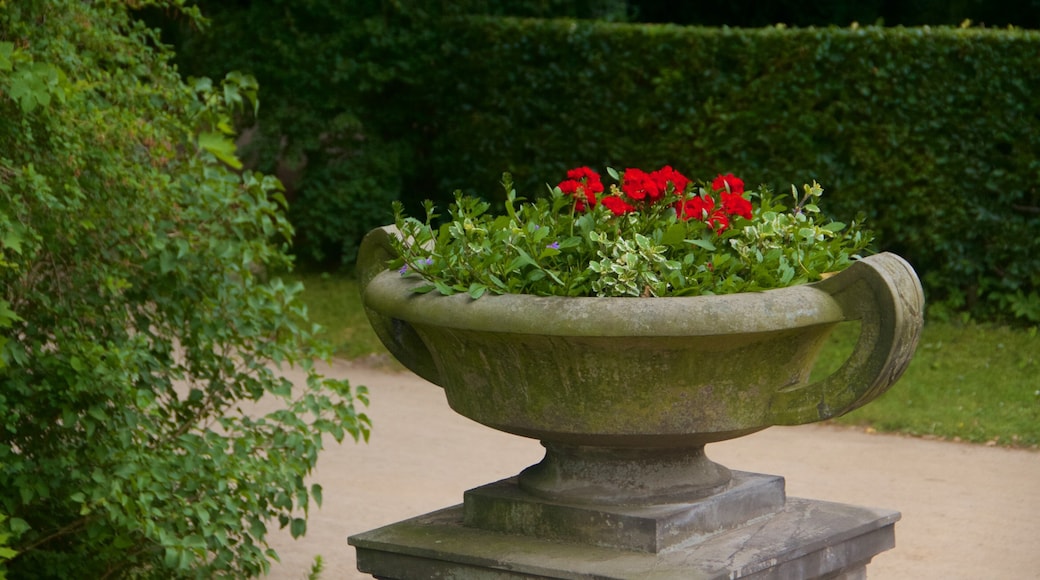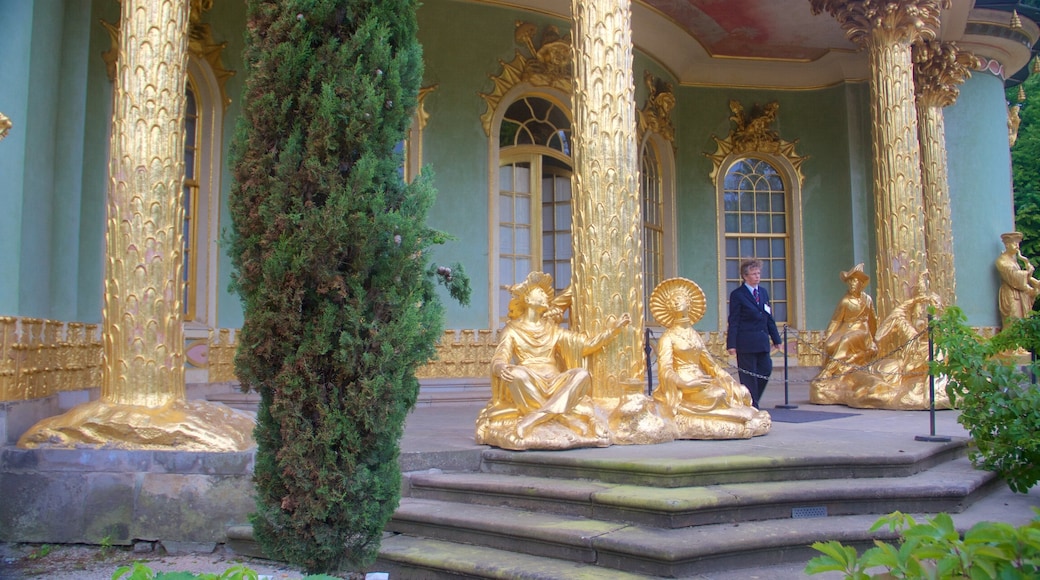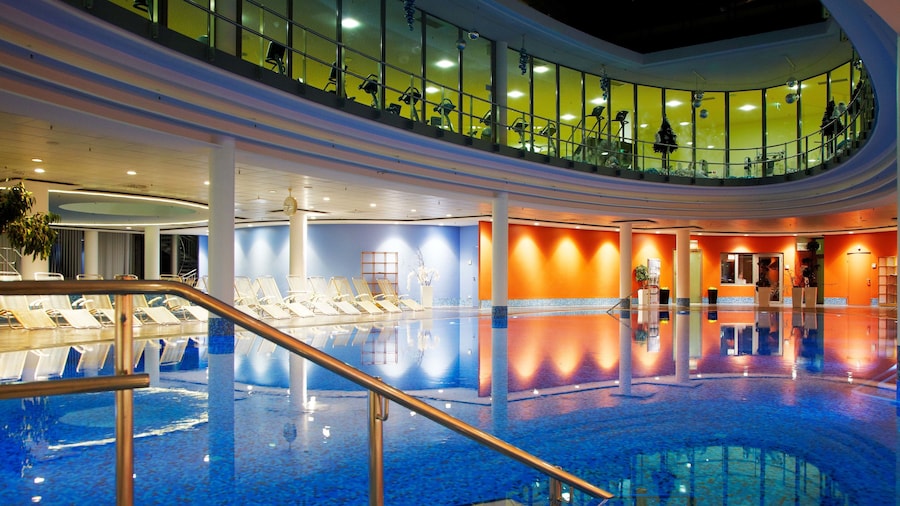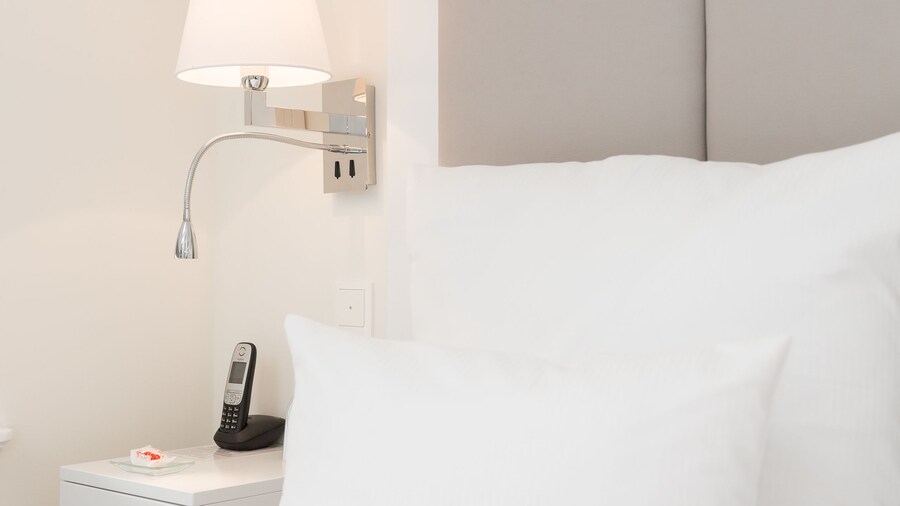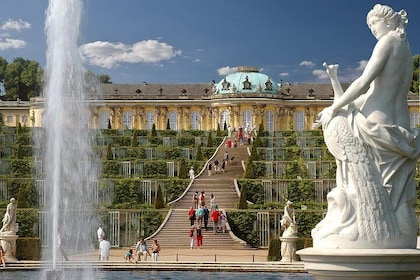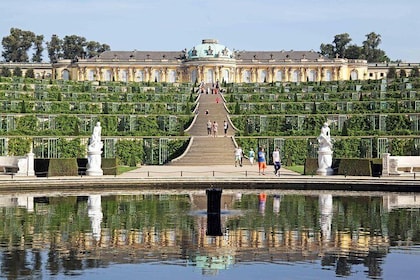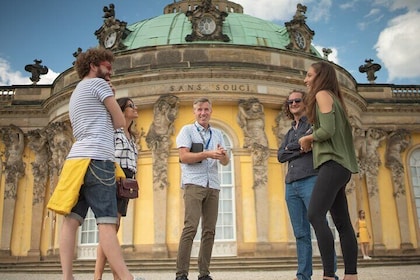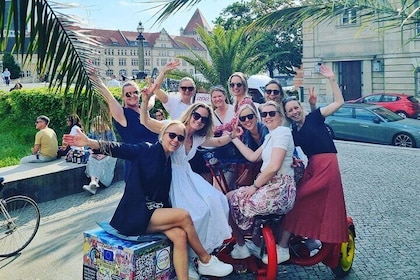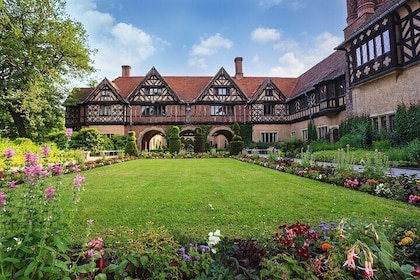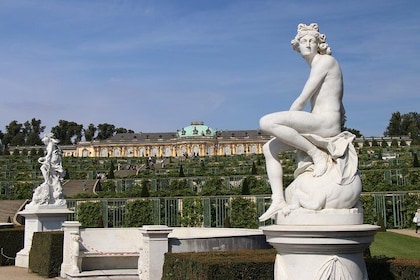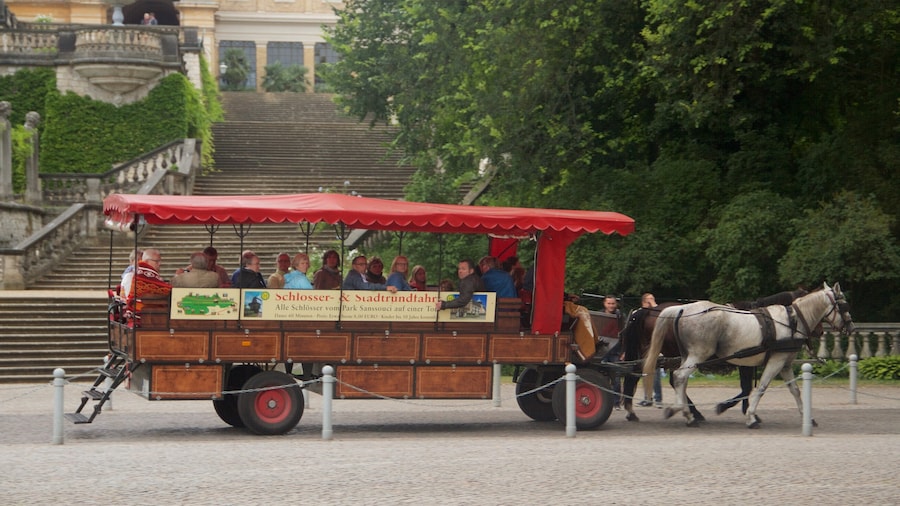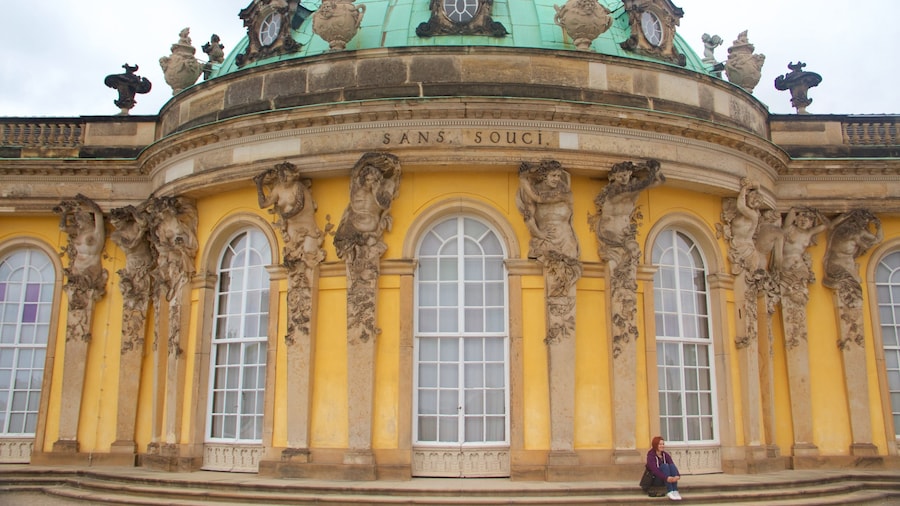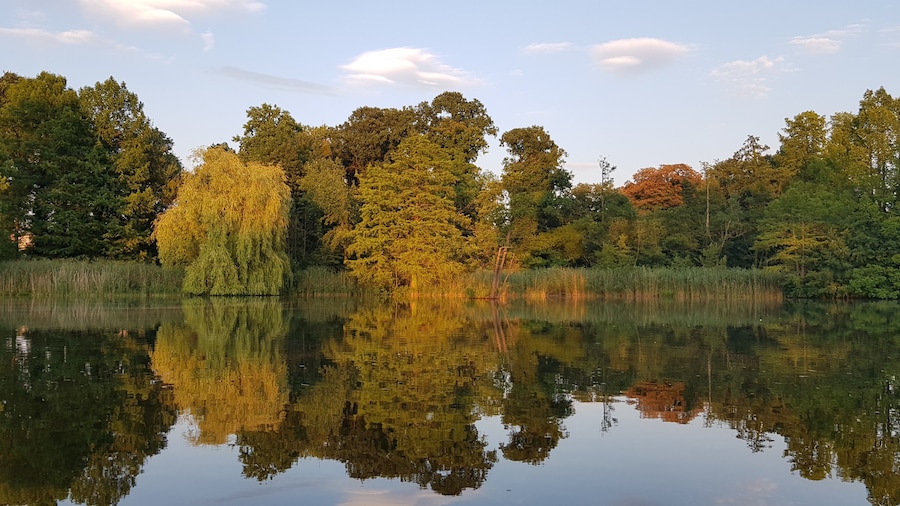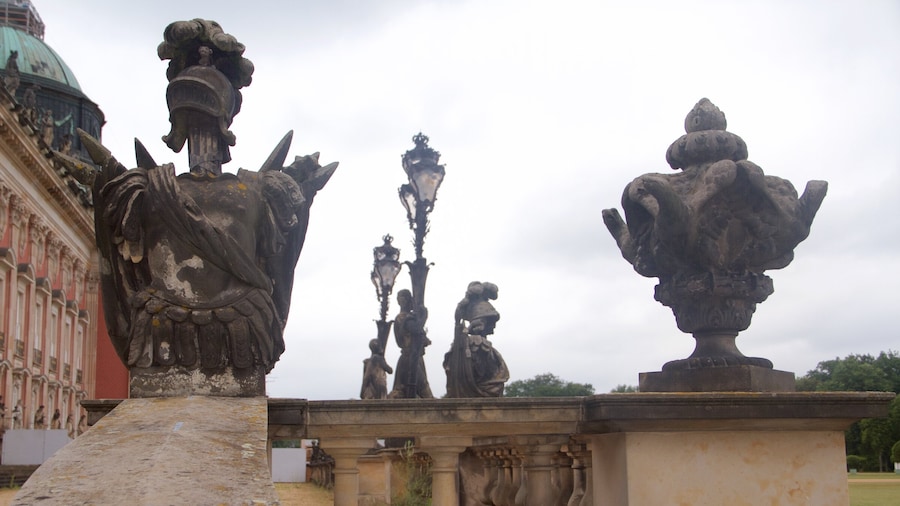This glowing teahouse in Sanssouci Park demonstrates the Chinese design elements that influenced Prussian architecture in the 18th century.
Be awed by the golden glow that emanates from the Chinese Tea House (Chinesisches Haus) in the Rehgarten of Potsdam’s elaborate Sanssouci Summer Palace. The tea house was built for Frederick the Great in the mid-1700s as a garden pavilion for the palace’s sprawling grounds. The magnificent structure took 9 years to complete, due to the Prussian involvement in the Seven Years’ War. Walk around the gardens and the golden pavilion to admire its superb architecture and ornate details.
As you approach the Chinese Tea House, notice its warm golden sheen. Dutch traders brought fine silks, porcelain, mother-of-pearl and lacquers to Europe from China in the 17th century. This lead to a blending of exotic Chinese design with European Rococo style, known as Chinoiserie. Note these architectural and design flourishes in the elaborate decorations on the Chinese Tea House. You’ll see elegant French windows and gilded sandstone columns, as well as pretty paintings in the façade’s stucco. Peruse the ornate series of gilded sandstone sculptures. Look closely to see the small figurines in different poses, including eating, drinking and dancing.
Stand back from the building to take in its cupola, which is crowned by a gilded statue carrying an open parasol. Walk around the building and note its clover-shaped foundations.
The Chinese Tea House is situated on the southern flank of the expansive Sanssouci palace grounds, on the eastern edge of the Rehgarten. It is a few minutes’ walk from the bus and tram stops that service the southeastern perimeter of the grounds and about 2 miles (3 kilometers) from Potsdam’s main train station. Be sure to spend some time exploring the magnificent attractions of Sanssouci Park, including Marlygarten, Lustgarten, beautiful pavilions and palatial residences. Sanssouci Park is open during daylight hours and free to enter, however, the palaces and museums have an admission fee.
